It’s not uncommon to see articles proclaiming the doom of the aircraft carrier in the face of the threat from China or other powers. Fortunately, the authors of such articles rarely understand warfare that well. Finding the carrier in the first place is not that easy, and then you have to kill it. Last time, I discussed the threat from conventional cruise missiles. But the weapon most commonly touted as making carriers obsolete is the DF-21D Anti-Ship Ballistic Missile (ASBM). The theory is that due to its speed and ability to evade defenses, there’s no practical way to protect against it. As you might expect, the story is much more complicated and much more favorable to the carrier.
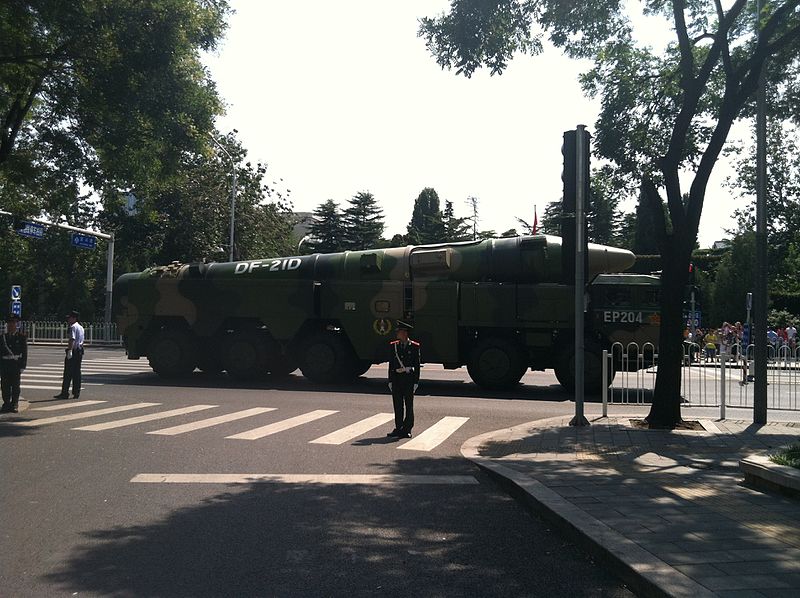
A DF-21D missile
The DF-21D first came to US attention in 2009, prompting concern in the navy and panic outside of it. Defense analysts and talking heads said that there was no defense against it. At the time, that was only partially true, and important context was left out. In certain circles, however, this was uncritically accepted and interpreted to mean that no defense against ASBMs was possible. One so-called defense expert even went to the point of claiming that no defense was possible against any weapon on a ballistic trajectory, including a Harpoon in pop-up mode.1 This is frankly absurd, as the same logic leads us to conclude that it’s impossible to play the game of baseball.
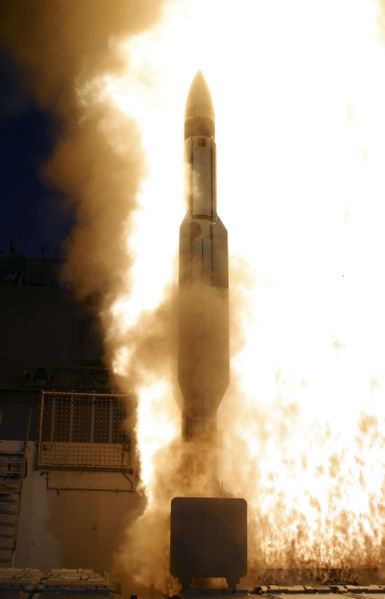
An SM-3
Above, I alluded to important context that the doomsayers left out, even though most of them should have known better.2 Since the mid-90s, the US has been working on a ship-based anti-ballistic missile (ABM) capability in the form of the Standard Missile-3 (SM-3). The SM-3 is a derivative of the USN’s long-range SAM, the Standard. The first test flight was in 1999, and 18 tests had been made by 2009. It came to public prominence in 2008, when one was used to shoot down a malfunctioning US spy satellite. This was quickly forgotten, as was the fact that Initial Operational Capability had been declared for the first Block in 2006.3
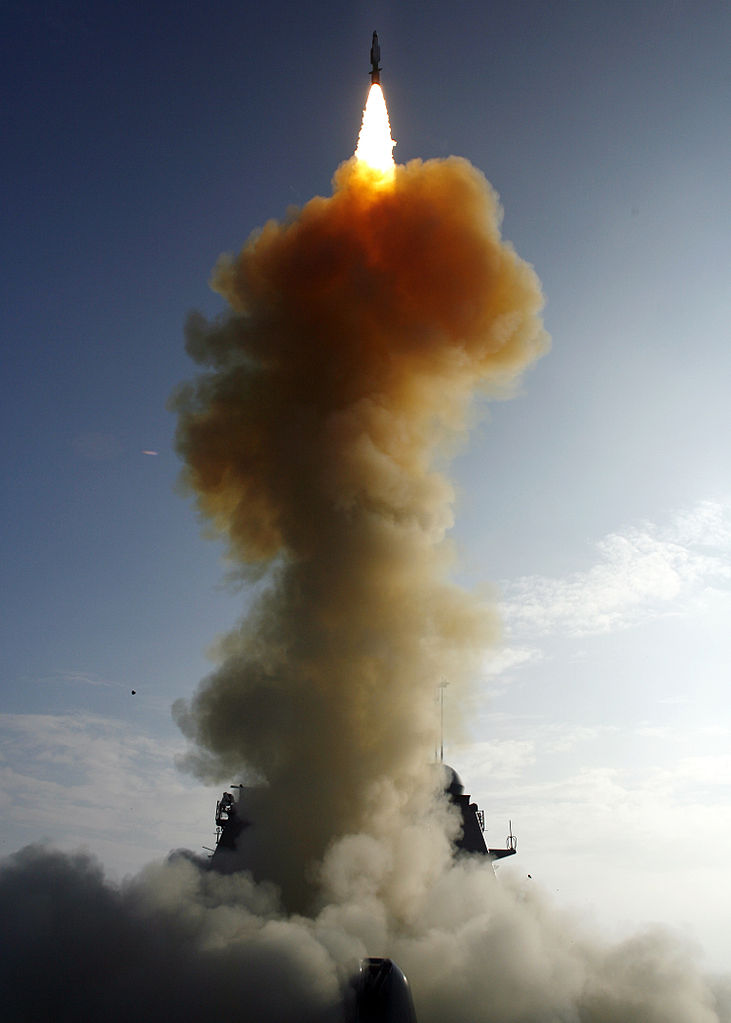
SM-3 launch at USA-193 from USS Lake Erie
The grain of truth in the pundit’s statements in 2009 was that the SM-3 capability the US had then was still fairly primitive. Only a few ships were fitted to use the missiles, and as far as I’m aware, none were carried operationally. However, that was entirely normal at that point in the SM-3′s lifecycle. Since then, development has continued, and the SM-3 is the best-tested and most successful of the US ABM efforts. As of May 2017, 35 of 42 intercept attempts have been successful, and SM-3s are now routinely carried at sea. In 2016, the first Aegis Ashore system was declared operational in Romania.
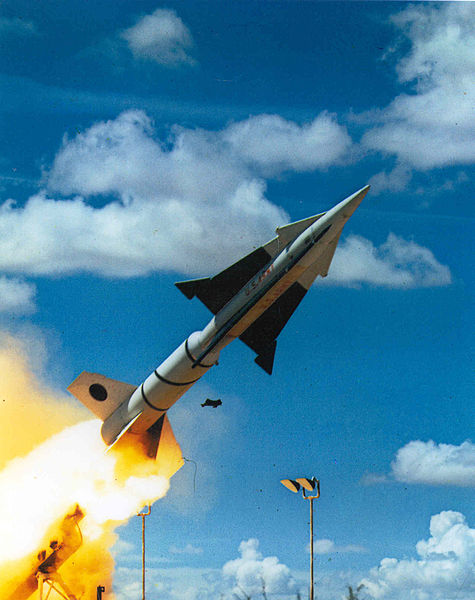
Nike Zeus
The usual response at this point is to dismiss the entire ABM effort as a waste of time and money, because ballistic missiles cannot be shot down. While their speed does make them difficult targets, ballistic missile defense is conceptually simper than air defense, because the target is on a predictable trajectory. The US was close to deploying an operational ABM system in the form of Nike Zeus in the 1960s, and the Israeli Iron Dome has proven very effective. Granted, its targets are much lower and slower than an ASBM, but scaling it up is ultimately an engineering problem, and one that is being solved.
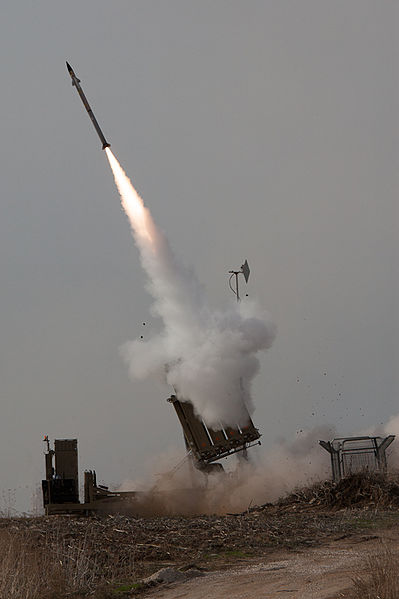
Iron Dome launch
A few proponents of the ASBM threat have made at least some acknowledgement of the existence of the SM-3, and come up with some reasons it won’t work. One is that because the ASBM will be targeted at the ship launching the SM-3, it will not have time to engage before the ASBM is too deep in the atmosphere for the SM-3 to intercept it. This is a strange claim, as crossing targets are universally harder to intercept than closing targets,4 and there have been successful tests using satellite data to cue the Aegis BMD system before the radar can see the target. Even if it was true for the current SM-3 Block IB, it almost certainly would not be for the next version, the Block II. It has a larger motor, making it 50% faster, and giving it marginal capability against ICBMs.
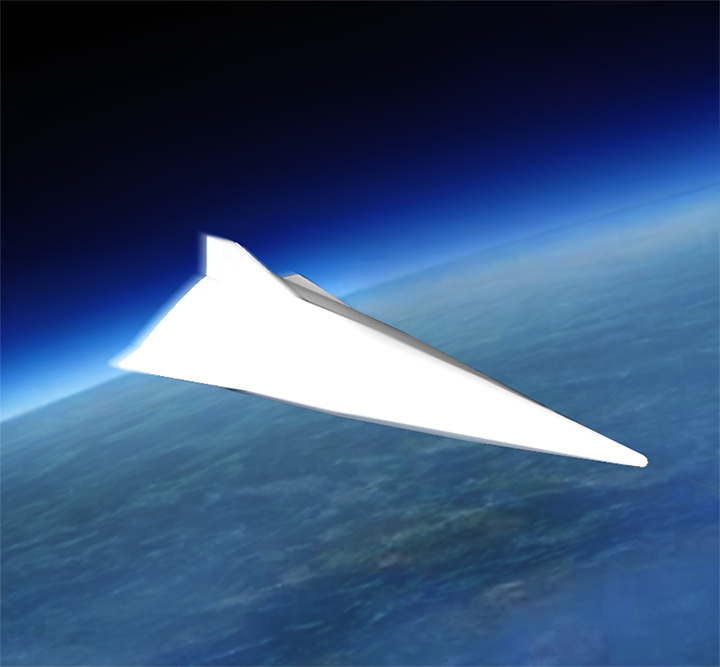
A hypothetical Chinese hypersonic glider
Others have claimed that the DF-21D’s maneuvering re-entry vehicle (MaRV) will allow it to dodge interceptors. This is even more dubious. MaRVs rely on aerodynamic forces to maneuver, and there is simply not enough air at SM-3 intercept altitudes for meaningful maneuver.5 The advantage of MaRVs is improved accuracy over conventional ballistic missiles, and a limited ability to use deceptive targeting, which doesn’t matter that much in this context.6
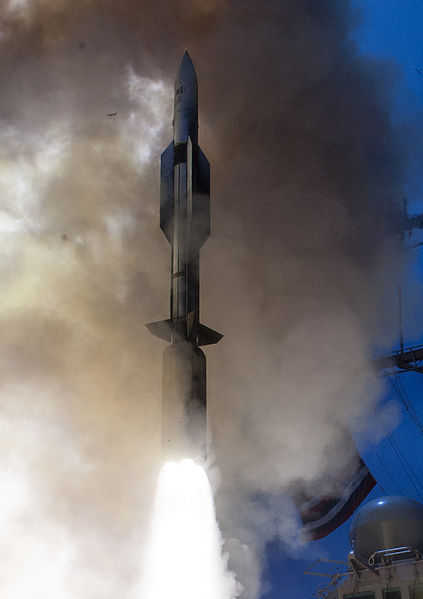
SM-6
Lower in the atmosphere, there are backup systems. The USN has the SM-2 Block IV and SM-6 missiles, both of which have at least some ABM capability. The MaRV now has enough air to maneuver, but the aerodynamic issues aren’t entirely gone. Getting lift at hypersonic speeds is difficult, and even the best shapes have lift-to-drag (L/D) ratios of at best 3 to 1. High-G maneuvers will bleed speed quickly, putting the MaRV squarely in the engagement envelope of conventional SAMs.
But even this isn’t the biggest limitation on MaRV defense evasion. Ballistic missile payloads must be kept incredibly light, and fitting a sensor package capable of detecting interceptors is right out. This forces the warhead to fall back on programmed evasion, which is significantly less effective. Lastly, the MaRV’s ability to maneuver is limited by the need to actually hit the target. An interceptor that forces it to dodge so much that it can’t hit anything is as good as one that shoots it down.
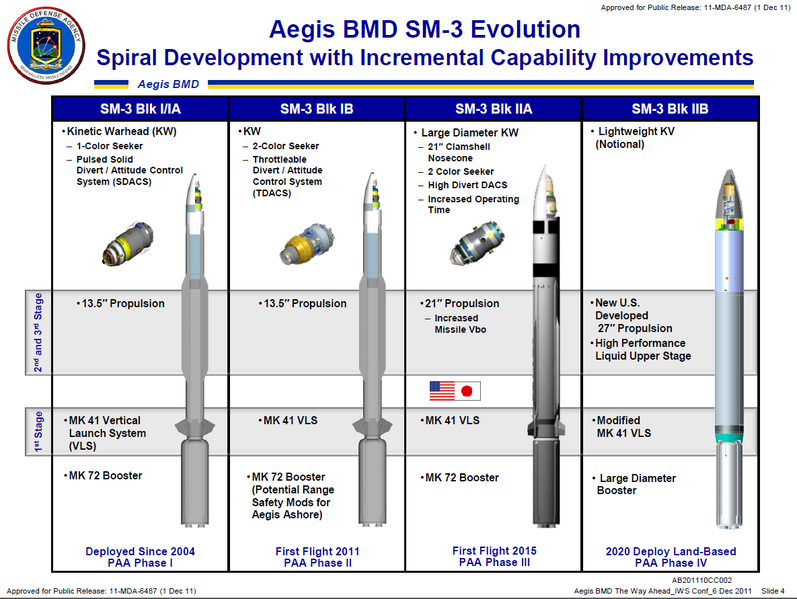
A hypersonic RV trying to hit a moving target has other problems. It has to search for targets, pick the right one, and then maneuver to hit in a very short time. Optical and IR sensors will be blocked by plasma, and the available space for radar sensors is quite small.
But all of this assumes that the DF-21D is a real threat in the first place. For a weapon that apparently entered service in 2009/2010, we haven’t heard very much information since then. Most recent media articles can be traced to the original revelations, and only a few have even bothered to look at the dates of their sources. The first alleged test of the DF-21D took place in mid-2019, with another one in 2020, and the details of both tests are still unclear. A full-scale test including the use of seekers would be critical to making sure that the system would work at all, much less work on a moving target which they have to tell apart from all of the other potential targets the missile can see. The DoD believes IOC was reached in 2010,7 which means that the Chinese have been deliberately holding off on such a test. If they still considered it an important part of their strategy, I believe they would have conducted a more extensive test program.
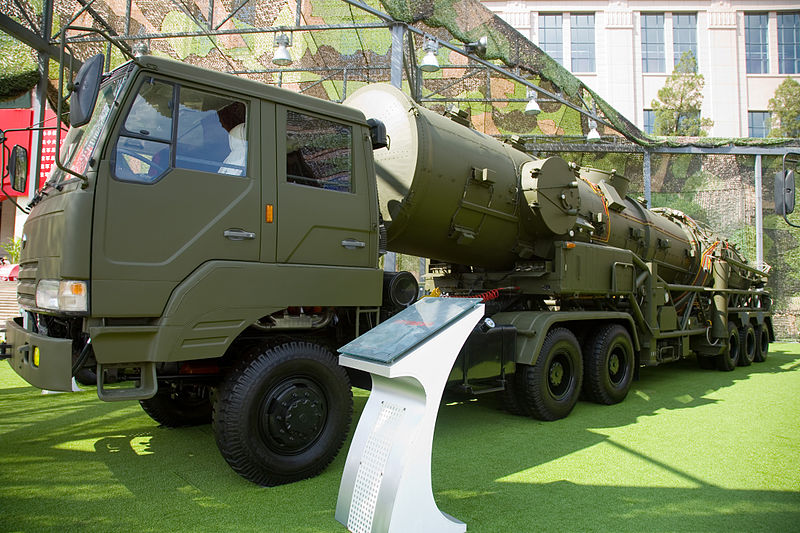
DF-21 Launcher
There are other indicators of a shift in Chinese strategy over the past 8 years or so. There’s a rift within the People’s Liberation Army Navy (PLAN) between those in favor of projecting power and those in favor of the more traditional coastal defense role. The DF-21D is a weapon of the second group, which has been losing ground lately. The most obvious example of this is the Chinese aircraft carrier program, with Liaoning’s entry into service and the recent launch of their second carrier.8 The power projection faction has also gained a lot of prestige from the Chinese involvement in convoy operations off the Horn of Africa. The Chinese are the preferred provider of escorts, mostly due to their rather liberal Rules of Engagement.9

Liaoning
Of course, missiles, cruise or ballistic, are not the only threat to the carriers. Submarines are also a serious problem, one I’ll discuss next time.
Postscript, 2025: It’s worth noting that the Houthis have deployed a more primitive ASBM in their war with commerce off Yemen, without a great deal of success. A few hit targets, and some have been shot down. More importantly, SM-3s were used in the defense of Israel against both Iranian missile attacks, and are reported to have worked quite well.
1 The existence of Harpoons that don’t have pop-up mode seems to give lie to this. As I understand it, the pop-up mode is mostly about hitting where the missile will do maximum damage, with a secondary defense-avoidance function. Also, a Harpoon in pop-up mode is still powered, and thus not actually ballistic. ⇑
2 Either they didn’t know about the context or they chose to ignore it to push the anti-ABM angle. In either case, they had no business informing the public about anything military-related. ⇑
3 Note that IOC means “this weapon is ready enough that it will probably be useful if we need it”, and not “this is fully operational and does everything we want.” ⇑
4 A missile coming towards you is going to have most of its motion in the axis towards/away from you, and little side-to-side. This is not true if it’s going far above you. ⇑
5 I’ve done a fair bit of modeling of RV trajectories as part of research into space warfare, and have models to back this up. ⇑
6 The downside is that they’re much larger and heavier than conventional ballistic missile RVs. ⇑
7 The US would almost certainly not declare IOC with so little testing. ⇑
8 It’s been said that the DF-21D was really aimed at Chinese aircraft carriers, not American ones, but that it missed them, too. ⇑
9 Shoot first, keep shooting, don’t bother asking questions. ⇑

Comments
So the carriers are good against Enemyistan. They’re good against China. But there’s one more challenge. Would they be good against America?
That is, how would the carrier fare in a hypothetical approximately symmetrical great-power war with current technology? (Probably with the assumption that the sides get time to design and build ships for symmetrical war, rather than the current USN facing a copy of itself) Would it still be the primary weapon at sea, or would its planes be reduced to spotting for the missile ship groups that could actually launch the kind of salvo you need? Or something else?
That’s a good question, and one I’m not quite sure about. Really symmetrical situations at sea are somewhere between unusual and unknown. (The only case I’m coming up with is Japan vs the US in the Pacific, and tech has changed a lot since then.) If surface warfare is our main concern, it is possible we’d see something of a return to the doctrines of the 30s, where the carrier is support for the surface fleet. But the big advantage of a carrier is that it’s really good at power projection ashore, and any great power is going to have to balance that against the hot-war role. What gets built probably depends heavily on how those two get balanced.
OK, it is March 5. and there’s a newly published article that covers the above discussed topic, and provides a countering view: at the moment of writing these lines I’m yet to read it:
http://www.unz.com/article/the-implications-of-russias-new-weapons/
I intend to write an analysis of Putin’s announcement, although it might be a few days. I’m strongly of the opinion that the “revolution” is nothing of the sort, and that he’s bluffing in hopes of stampeding us into doing something stupid. Let’s just say that the authors of most of the articles spewing doom do not have a good grounding in nuclear weapons history and theory. (Anyone who fails to mention Skybolt and FOBS is not worth listening to.) Re the air-launch Iskandar specifically, I stand behind this post 100%. It’s not a game-changer. It’s a air-launched ballistic missile, with all the drawbacks of other ASBMs. Calling it “maneuverable” does not change the laws of physics.
How would that work? Plasma physics means longer wavelengths are reflected, same wavelengths are absorbed and shorter wavelengths pass through. If longer-wavelength radar worked in such a scenario, How do you know shorter-wavelength IR/optical wouldn’t work?
Also, how are you expecting carriers to deal with maneuverable hypersonic scramjet cruise missiles? It doesn’t seem unreasonable to believe they would be too fast and maneuverable for anything but near-carrier terminal interceptions. Even then, would the carrier’s point defenses be able to sufficiently account for the entirety of the missile’s potential paths?
The extremely short version is that the plasma is glowing. That means it’s optically opaque, and probably not particularly transparent to IR, either.
Because “hypersonic” and “maneuverable” aren’t really compatible. Hypersonic aerodynamics are inefficient compared to sub/supersonic aerodynamics (I want to say that in a lot of looking at atmospheric entry stuff, Cl/Cd never got above maybe 3-5, which would be horrible for an airplane) and that means that generating a big course change is going to scrub a lot of energy, and slow it way down. At which point I’m not sure how well the scramjet will work. Also, there’s the bit where we still don’t really have working scramjets.
I hardly trust the person but I’ve read someone write the power to maintain speed is proportion to the velocity cubed while kinetic energy would be velocity squared. Wouldn’t that mean maneuvers would be trivial energy expenditures to scramjet vehicles?
Not necessarily. Exceedingly rough version: Induced drag is proportional to the lift coefficient squared. So if a missile wants to make a 1-G turn (in addition to the 1 G required to hold it up) it’s going to need to produce 1.414 times as much lift. (Square roots are our friends here.) So that would initially mean twice as much induced drag. But in a longer turn, you’d lose speed unless you have extra thrust. Given that we’re talking about a hypersonic cruise missile, you probably don’t. So at that point, it starts to slow down, which reduces the dynamic pressure. If you want to keep that 1-G turn, you’re now going to need more lift, which in turn means even more drag. (I can’t do the math on this without some idea of what the parasitic drag is, but this is a significant effect.) And a 1-G turn isn’t all that much, particularly if you’re at hypersonic speeds. Your turn radius is going to miles across. I may look into this with more actual numbers in the morning.
Edit: It’s worth pointing out that for a missile doing Mach 5, the radius of a 1-G turn will be close to 300 km.
Scramjets are also inherently low T/W so the whole maintaining speed in curves thing will be hard even with gentle turns.
Yes, but wouldn’t a small reduction in airspeed cause a large reduction in friction, which would offset the increased drag due to lift? Especially if lift drag is relatively small compared to parasitic (which I have no idea how accurate an assumption it might be).
Why can’t a subsonic interceptor be just as maneuverable (ie capable to produce sudden lateral acceleration) as a hypersonic missile? As long as it’s launched from somewhere between the missile and the target, it doesn’t need to go fast to intercept.
That is going to depend on where on the L/D curve you’re operating in cruising flight. If you’re below max L/D, then slowing down might let you move to a more favorable region of the curve, and take advantage of the benefit you identify. But if you cruise at max L/D (which I think is what you want for best speed) then slowing down is going to make D go up faster than L, and that’s going to bleed speed very quickly. You’ll probably be saved by the fact that L/D changes with airspeed, but any turn slowing you down a lot is going to be rather a problem for a “maneuverable” missile.
I wouldn’t want to try to intercept with anything quite that slow. The big thing is that hitting it further out is better. First, you don’t want debris hitting the target. This is a major concern for gun CIWS today, and had a lot to do with the development of RAM. Second, it gives you more chances to engage if your initial attack fails.
I may have to dig out some of my old aerodynamics stuff and figure out how much sense any of this makes.
OK. I’ve looked through the aerodynamic literature I have available (and that should be most in the public domain) and unfortunately I can’t find any clear information on what a practical scramjet waverider would look like. There’s plenty of theoretical studies on waveriders, which suggest a limiting L/D of 10+ even into the hypersonic regions, but those are all on simple designs with no wind tunnel data. For the cases where they seem to have made some effort at a practical design, I don’t think I’ve found anything that cracked L/D of 3, and most are 2 or less. The more I look at this, the more I am confused. There’s a disconnect somewhere, but the information I need to know if I’m wrong or if the media is is almost certainly classified.
The more I look at this, the more I think that hypersonic maneuverability is vastly oversold. The highest L/D I can find for anything which has actual wind-tunnel data is 6, and that’s only at Mach 4.5. Using a terrible model of the L/D curve, and assuming we go from level flight at L/D 2 to L/D of 6 for maneuver with thrust held constant, I get the maneuvering speed of 80% of level flight speed and the missile able to pull 2.8G. Which is actually better than I thought it would do, but still not great.
So what is our turning radius? Well, if we assume we’re at altitude (Mach 1 = 300m/s) and the missile has dropped from Mach 5 to Mach 4, then the radius is 51.95 km. Which is still an awful lot. You can turn faster if you’re willing to bleed off more speed, but it could be pretty hard or even impossible to get back.
@ADA
It depends if we’re assuming both nations are aggessors, or if one is aggressing while the other is basically defending.
I think the issue is that the US, while a major sea power, is also not as reliant on sealanes for meeting internal material needs, especially assuming our hypothetical confrontation gives enough time to build up domestic capacity that has been offshored to China.
i.e. most prior dominant naval powers (UK, Japan, Spain?) have had significant need for sea trade in a way that the US, Germany, France, and Russia didn’t. So, to some extent the US can retreat into its landmass if it suffers naval setbacks in a way that the UK or Japan couldn’t, which makes a decisive engagement more difficult.
Therefore, a future peer would have to optimize for strike capacity over the mainland, with the goal of hitting the major coastal cities, and not a pure blue water engagement. (Which in some ways I think is the difficulty of aggressive war with China, as they have a big shallow littoral, and lots of inland development.)
Really though, any sort of peer on peer knockout war ends up being SSBNs, not carriers.
Alternately, you could have a sort of low intensity sea control conflict, where the most effective weapons are FFGs and SSNs to enforce a blockade of some sort, and in that case carriers are sort of ambiguous. Are they escalatory due to their capabilities, moving everything closer to SSBNs, or are they basically immune stabilizers where neither side wants to hit the other because of the cost and casualties it would impose?
What about with NASA’s “envisioned speed of at least Mach 15?”
I think the idea was that the random maneuvers would be so large and fast enough that interceptors couldn’t predict where it would be. Additionally, the interceptor has to go from zero to fast while the missile starts fast and leaves little reaction time.
Anyway, here’s one of the comment’s in question: https://old.reddit.com/r/LessCredibleDefence/comments/jcx8ye/bigboywithanallegedlyhypersonicmissile/g94rju6/ He has more comments on hypersonic missiles in that topic and on his userpage.
Much, much larger radius. If the L/D holds up, we go from Mach 15 to Mach 12, and the radius is 467.5 km. Which is a lot.
This person is not an aerospace engineer. He’s technically right about power being proportional to the cube of speed, but that’s not the right way to look at it (particularly because the engine doesn’t produce constant power, it produces power proportional to speed, assuming constant thrust). You’re dealing with constant thrust (probably not, actually, but I don’t really know scramjets), and that’s going to control your acceleration. For that matter, scramjet T/W is very low, as Anonymous pointed out. I can’t find well-sourced numbers offhand, but it looks to be something like 2 to 3. That’s a hard limit on how fast the missile can regain speed. I’ll be exceptionally generous and assume that the missile has a T/W of 2.5, and L/D of 2. That means you’ll have an acceleration of 20 m/s2 (the remaining .5 of T/W is taken up countering drag) and that’s ~15 seconds to gain a Mach number at altitude. Which is a lot of time, actually, and definitely not “getting back up to speed very, very fast”.
The problem is that random maneuvers can’t be that large or that fast. The faster you go, the less margin you have for maneuver, because you need to hold down overall drag and generating more lift to maneuver means more drag. Also, you just don’t have that much lift period because hypersonics is not a fun place to try to do aerodynamics in.
On the one hand I’m glad.
On the other hand I’m kinda sad cause uber hypersonic ship killers would’ve been pretty cool.
Thanks.
Regardless, just to cover all my bases, do you think there’s any chance pnuemonic/fluidic actuator controls could help them increase maneuverability? Or plasma boundary layer control / plasma actuators?
Also, while I have your attention, do you suppose lifting-body designs could extend the range of artillery shells or missiles? Maybe even with HVP ammo?
You are most welcome. I haven’t gotten to play with that stuff for 5 years now, so it was fun to dip my toes back in.
Not really. All of those are “fiddling around the edges”, which is fine, but not what you need to solve this kind of problem. You’ll get more out of the boundary layer stuff, but still not enough.
Probably. The issue is that lifting bodies aren’t a good shape for an artillery shell, so you’ll sacrifice a lot of payload.
Don’t suppose you’d wanna take a crack at some more permutations?
What about lifting-bodies for A2A missiles or glide-bombs?
Do you think A2A missiles, artillery or glide-bombs could fly in V formation to extend their range?
Would V formation actually help at supersonic/hypersonic speeds?
Do you suppose the plasma actuator concept could actually be especially helpful to A2A missiles since they’re so sensitive?
Wanna take a guess as to how far F-35s could fling lifting-body, plasma actuator and/or V-formation SDB-style glide bombs?
Maybe some on AAMs. No on glide bombs. Lifting bodies aren’t that efficient, and if you can use them, you go with fold-out wings. Those aren’t great at hypersonic speeds, but hypersonic glide bombs aren’t a thing.
The big deal is that none of those have throttleable engines (except for maybe a few AAMs), so the V formation won’t last.
Honestly not sure.
Not sure. Interesting technology, but I don’t know enough about anti-air missile design to have a strong opinion.
Significantly less far than it can launch an actual SDB.
I tested out the DF-21D in Command, and it was giving SM-3 a .75 Pk against it. Command isn’t 100%, but it’s better than anything else I have access to.